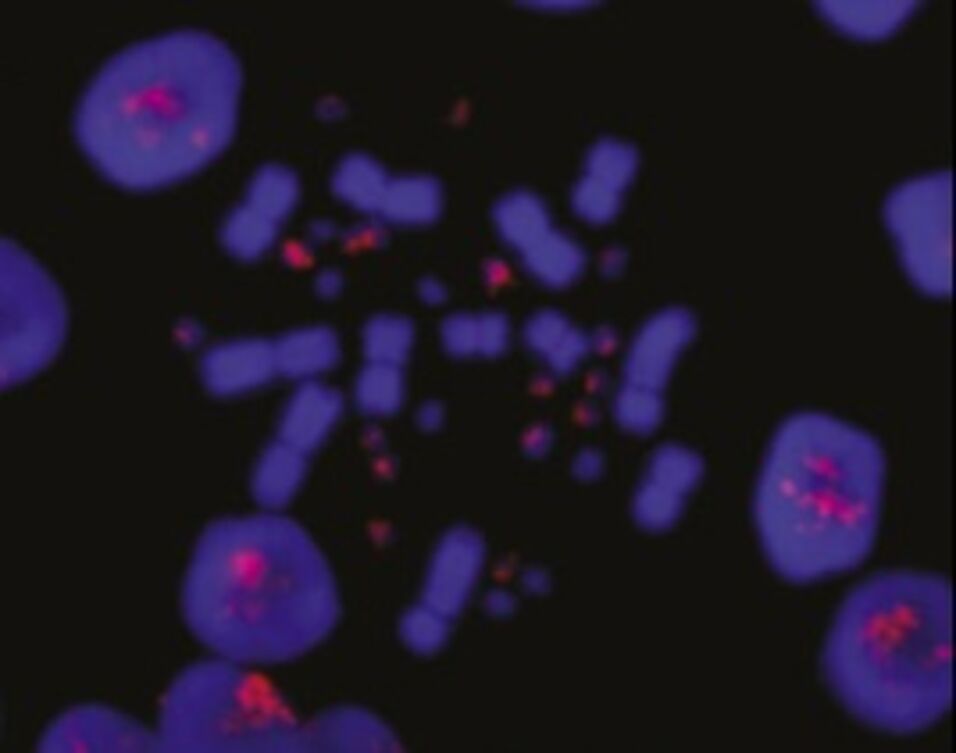Paper 1:
Microchromosomes are building blocks of bird, reptile, and mammal chromosomes
Abstract
Microchromosomes, once considered unimportant shreds of the chicken genome, are gene-rich elements with a high GC content and few transposable elements. Their origin has been debated for decades. We used cytological and whole-genome sequence comparisons, and chromosome conformation capture, to trace their origin and fate in genomes of reptiles, birds, and mammals. We find that microchromosomes as well as macrochromosomes are highly conserved across birds and share synteny with single small chromosomes of the chordate amphioxus, attesting to their origin as elements of an ancient animal genome. Turtles and squamates (snakes and lizards) share different subsets of ancestral microchromosomes, having independently lost microchromosomes by fusion with other microchromosomes or macrochromosomes. Patterns of fusions were quite different in different lineages. Cytological observations show that microchromosomes in all lineages are spatially separated into a central compartment at interphase and during mitosis and meiosis. This reflects higher interaction between microchromosomes than with macrochromosomes, as observed by chromosome conformation capture, and suggests some functional coherence. In highly rearranged genomes fused microchromosomes retain most ancestral characteristics, but these may erode over evolutionary time; surprisingly, de novo microchromosomes have rapidly adopted high interaction. Some chromosomes of early-branching monotreme mammals align to several bird microchromosomes, suggesting multiple microchromosome fusions in a mammalian ancestor. Subsequently, multiple rearrangements fueled the extraordinary karyotypic diversity of therian mammals. Thus, microchromosomes, far from being aberrant genetic elements, represent fundamental building blocks of amniote chromosomes, and it is mammals, rather than reptiles and birds, that are atypical.
Paper 2:
The Nereid on the rise: Platynereis as a model system
The Nereid Platynereis dumerilii (Audouin and Milne Edwards (Annales des Sciences Naturelles 1:195-269, 1833) is a marine annelid that belongs to the Nereididae, a family of errant polychaete worms. The Nereid shows a pelago-benthic life cycle: as a general characteristic for the superphylum of Lophotrochozoa/Spiralia, it has spirally cleaving embryos developing into swimming trochophore larvae. The larvae then metamorphose into benthic worms living in self-spun tubes on macroalgae. Platynereis is used as a model for genetics, regeneration, reproduction biology, development, evolution, chronobiology, neurobiology, ecology, ecotoxicology, and most recently also for connectomics and single-cell genomics. Research on the Nereid started with studies on eye development and spiralian embryogenesis in the nineteenth and early twentieth centuries. Transitioning into the molecular era, Platynereis research focused on posterior growth and regeneration, neuroendocrinology, circadian and lunar cycles, fertilization, and oocyte maturation. Other work covered segmentation, photoreceptors and other sensory cells, nephridia, and population dynamics. Most recently, the unique advantages of the Nereid young worm for whole-body volume electron microscopy and single-cell sequencing became apparent, enabling the tracing of all neurons in its rope-ladder-like central nervous system, and the construction of multimodal cellular atlases. Here, we provide an overview of current topics and methodologies for P. dumerilii, with the aim of stimulating further interest into our unique model and expanding the active and vibrant Platynereis community.

